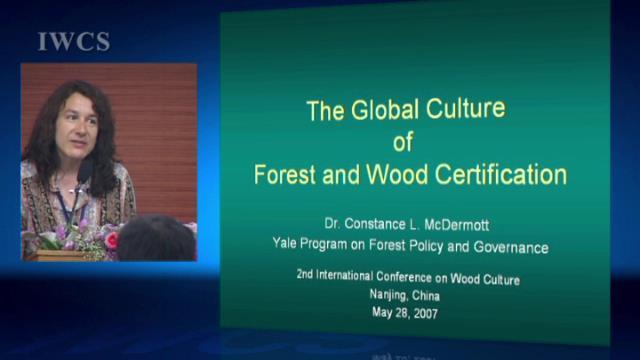会议名称:第二届木文化国际研讨会
会议时间:2007年5月28日-31日
会议地点:中国·南京
报告嘉宾:Constance L. McDermott
报告摘要:In the modern globalized world, the culture of wood and the culture of forests are only very loosely linked, at best. Wood remains a highly popular material for an enormous array of purposes, from functional buildings to decorative art, from glossy magazines to fuelwood and other subsistence products. At the same time forests are valued as wilderness, as habitat for wildlife, as places to recreate, as well as for many other aesthetic, spiritual and quality-of-life reasons. While both forests and wood have many positive cultural associations, the harvesting of forests to produce wood often does not. Further complicating this cultural disconnect, concern for forests and wood has become increasingly global in focus, spanning a broad diversity of cultures.
The environmental certification of wood products is arguably the first global-scale attempt to link the wood and forest cultures in the modern mind. It involves the awarding of an eco-label for forest products that were produced in a manner that protects the forest. The aim is to allow environmentally conscious consumers to support responsible forestry by buying wood with an eco-label.
Forest certification first emerged in the late 1980s, during a time of growing controversy over the environmental and social costs of global wood production. While controversy may have been a catalyst for forest certification, its success relies on agreement around a “common language” or standard for good forestry and “good wood”. Perfect consensus on the meaning of “good forestry” has yet to be reached. Nevertheless, communication around forest certification has contributed significantly to cross-cultural learning.
One of the areas in which this learning has occurred, is global wood trade dynamics. Much of the earliest certification efforts were focused on the tropics. However, market campaigns in the US, Canada and Europe contributed to rapid growth of certification in developed countries with little spill over effect elsewhere. Certification proponents have since learned that certification of tropical wood requires strategies carefully tailored to tropical wood markets. It also requires addressing problems with forest governance and illegality, as well as providing support and capacity building. Both governments and the private sector have stepped in to address these issues through the development of “step-wise” approaches to tropical forest certification.
Today, in all regions of the world, certification and/or some other form of wood source verification is fast becoming a cultural norm of the international marketplace.
责任编辑:iwcs24L


 925
925